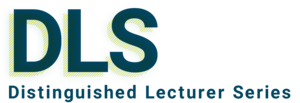
Cornelia Denz - Complexity by light - from topologies to light-driven swarming
Cornelia Denz
Physikalisch-Technische Bundesanstalt, Braunschweig, Germany
Abstract
Customized structured light has found a number of applications ranging from nano-scale manufacturing over optical micromanipulation to high-resolution imaging. Besides well-established amplitude and phase modulation, polarization has been rediscovered as a degree of freedom that enriches the diversity of spatial structures, leading to fully structured light.
Light structures with singularities causing optical momentum that can be transferred to matter are especially interesting since they represent structures with a topological nature. These optical topological structures are characterized by integer invariants and represent “holes” in the light degree of freedom.
In our contribution, we combine the methods and tools of structured light with topological constructs in such a way to create three-dimensional light, giving rise to tailored topological photonics, an emerging field of classical light. On the fundamental side, tailoring confined light leads to striking volumetric topologies as Moebius polarization bands. They are an example of how to tie knots in light. Knotted structures embedded in optical fields are extremely stable while representing a singularity structure of the entire electromagnetic field. As examples, we realize 3d light fields in polarization and phase that result in complex three-dimensional topological constructs as the Hopf fibration. They resemble truly localized, particle-like objects in space. On the application side, such complex light structured can be used to create nano- and microscale matter that in turn can be used to model complex, self-organized phenomena of nature. We will discuss how structured light can contributed to develop intelligent matter where a large number of simple functional agents interact to create intelligent swarming behaviour.
Biography
Cornelia Denz studied physics at the Technische Universität Darmstadt, where she earned her diploma in nonlinear optics in 1988. She remained there for her PhD, working on optical neural network and optical data storage. During her doctorate she worked at the École supérieure d'optique. In 1993 Denz was made Head of the Photorefractive Group at Technische Universität Darmstadt. She moved to the University of Münster in 2001, where she leads the Nonlinear Photonics Group. She founded the Centre for Nonlinear Science (CeNoS) at the WWU University of Münster. She became Chair of Applied Physics and Head of the Institute in 2003. Denz develops modern optical methods for structuring light and matter; which includes optical data storage and systems for information processing. She developed a compact holographic data storage system in which data is imprinted on a liquid crystal display onto a laser beam. The laser beam is superimposed on a separated reference beam, with the information being encoded on a hologram. The information is read in parallel and can permit high data transfer rates. For digital data, holographic storage allows for improved security and encryption. She is interested in developing single crystal data storage systems, and uses them an switching elements such as optical transistors. She has worked on photonic crystals that use non-linear photorefractive materials. She demonstrated that optical induction could be used to produce quasicrystals, a chemical structure that has three-dimensional crystalline groups with spiral structures and defined defects. In CeNoS Denz uses nonlinear dynamics and chaos control, such as the control of cavity solitons and generation of slow light. In 2008 Denz began working with complex light fields; including non-diffractive and accelerating light fields, for the creation of holographic optical tweezers. She has used these light fields to manipulate nano and micro-scale particles.
Leuchs-Russell Auditorium, A.1.500, Staudtstr. 2
Location details





